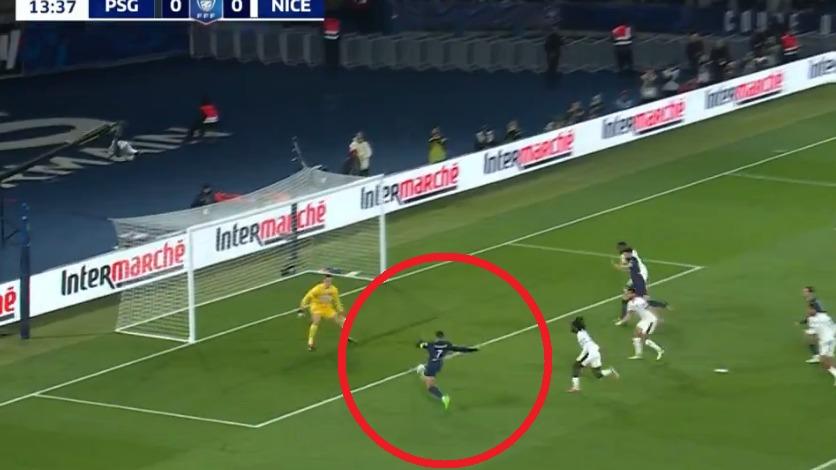On a human scale, gases behave quite peacefully: in a stable fluid, on average, the displacement of the particles is zero.
However, the situation is very different on a microscopic scale.
If we could follow the motion of a single air particle, it would draw a very erratic trajectory, simply because it would not stop colliding with other particles.
The passage from this image to the description of the global evolution of gas laws is studied in a branch of physics called statistical mechanics, and rigorously demonstrating these results is a remarkably difficult mathematical problem.
One of the keys to understanding the behavior of gas particles is chaos theory.
The concept of chaos was introduced at the beginning of the 20th century by the mathematician Henri Poincaré.
While studying the motion of the planets, Poincaré discovered that small causes could have huge consequences.
This, in some way, ended the philosophical current of determinism, very popular at the end of the s.
XIX, since, although in theory it is possible to accurately calculate the future of a chaotic system, its sensitivity to initial measurements makes it unpredictable in practice.
In that visionary text, Poincaré went a little further and observed that chaos was precisely the source of randomness.
This meant that chaotic phenomena could be accurately predicted from a statistical point of view.
For example, a roll of a die is purely deterministic and chaotic, but it is very well described by basic probability.
So, would it be possible to also describe the behavior of the particles of a gas with probabilities?
To begin to understand such a complex phenomenon, mathematicians like to play with what they call a "toy model," which is a simplified configuration in which theorems are supposed to be easier to prove.
For gases, one of the most studied is billiards.
In this model, the starting point is a pool table, with any imaginable shape, in which a ball is thrown.
The ball rolls without friction across the table, colliding with the sides, as determined by the law of reflection - the balls cannot be given effect.
The question is, will the position of the balls appear random, as it did before with the dice, after a certain time?
In this simple model, the balls - which represent particles of a gas moving inside a box with a specific shape - continue to slide on the table forever.
The question is, will the position of the balls appear random, as it did before with the dice, after a certain time?
More specifically, is it possible that after a number of collisions, the initial position of the ball, the direction and the accuracy of the throw do not give any information about the position of the ball?
The objective is to determine what is that number of shocks from which the position of the ball is well described by probabilities.
Recently, with the help of mathematical tools developed over the last five decades, a group of mathematicians has shown that, for a whole family of table shapes, after just a few collisions the position of the ball appears totally random.
This property is part of the so-called ergodic hypothesis, which is the starting point for deducing the global laws of evolution of gases from microscopic models.
The key idea in the above proof is to use the Perron-Frobenius theorem - a question of pure mathematics proposed more than a century ago - which uses the probability of transition from one part of the table to another.
Surprisingly, this same theorem can be applied to the structure of the web.
In this case, the probability of going from one page to another depends on the number of links that go from the first to the second.
The theorem gives you the probability distribution of a user who is randomly clicking links, and it can be used to classify pages: a website will be considered important if it receives many visits from this type of user.
The obtained algorithm, developed by Larry Page, is called PageRank, and is at the origin of the success of the search engine Google.
Again, this is another example of the usefulness of fundamental research in mathematics, which produces tools applicable to both theoretical physics and the creation of a technological giant.
Pierre-Antoine Guihéneuf
is a researcher at the Jussieu-Paris Rive Gauche Institute of Mathematics at the Sorbonne University
Café y Teoremas
is a section dedicated to mathematics and the environment in which they are created, coordinated by the Institute of Mathematical Sciences (ICMAT), in which researchers and members of the center describe the latest advances in this discipline, share points of view encounter between mathematics and other social and cultural expressions and remember those who marked its development and knew how to transform coffee into theorems.
The name evokes the definition of the Hungarian mathematician Alfred Rényi: "A mathematician is a machine that transforms coffee into theorems."
Editing and coordination:
Ágata A. Timón García-Longoria
(ICMAT)
You can follow
MATERIA
on
,
,
or subscribe here to our
newsletter



/cloudfront-eu-central-1.images.arcpublishing.com/prisa/7N526UKL3ZHYZJ6ASWAI3F5WBI.jpg)


